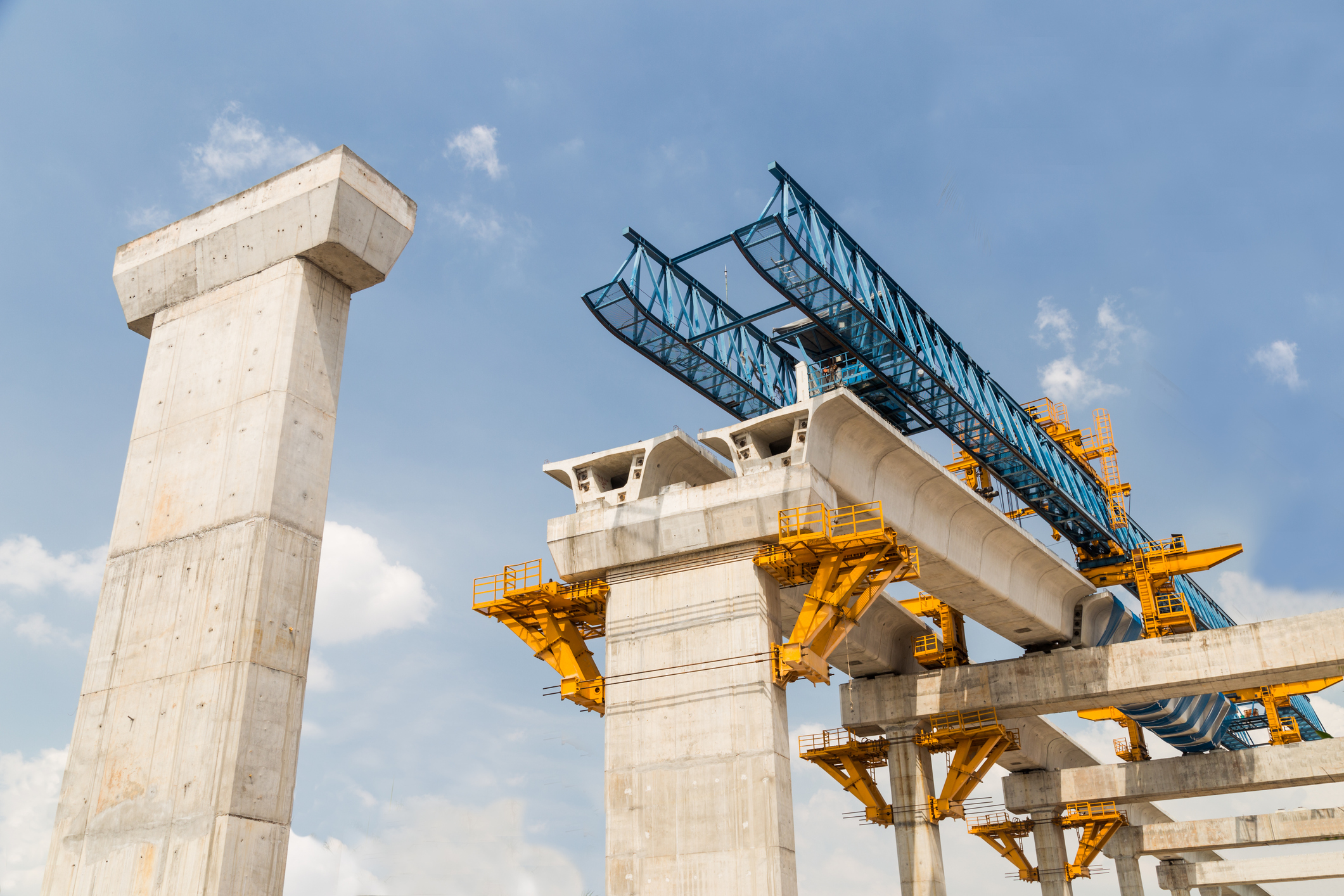Often the best way to learn is through first-hand experience.
After looking at data, I wanted to experience the differences in cost, comfort, and convenience with immediate comparisons between several forms of transit. Below are a few pictures I took and observations I made.
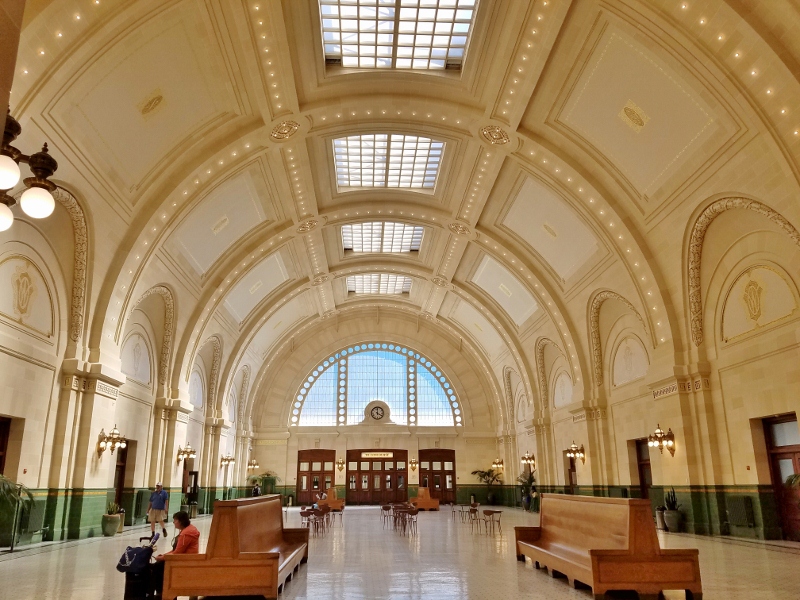
My day began with a quick trip on a King County Metro bus to Sound Transit headquarters at the beautiful Union Station (not to be confused with King Street Station across the street).
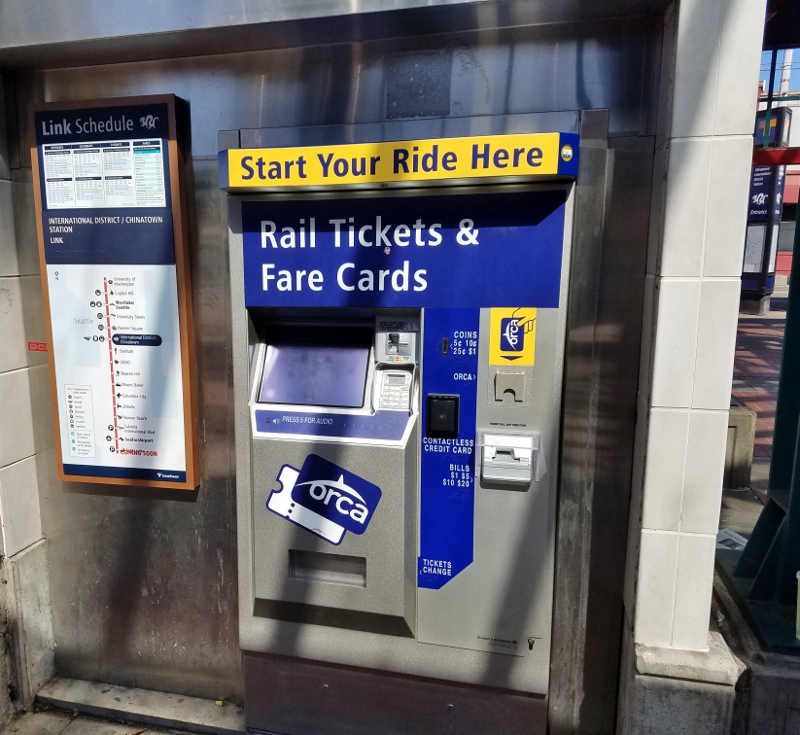
On the plaza above the International District Transit Station next to Union Station, I purchased a ticket at this outside machine so I could board Sound Transit Link light rail going north to Capitol Hill and the University District.

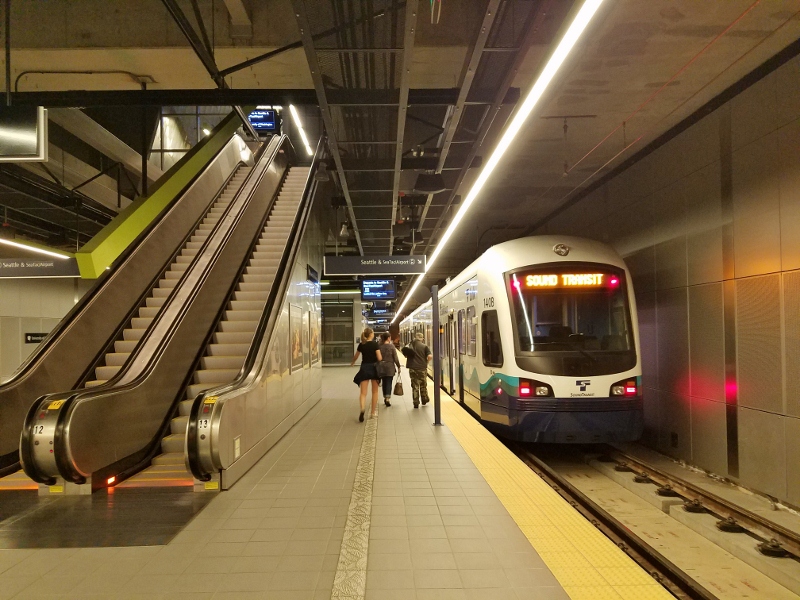
This is the platform at University of Washington light rail station, which is 80 feet below ground, with escalators and elevators at entrances. Admittedly, this station felt slightly claustrophobic for me.

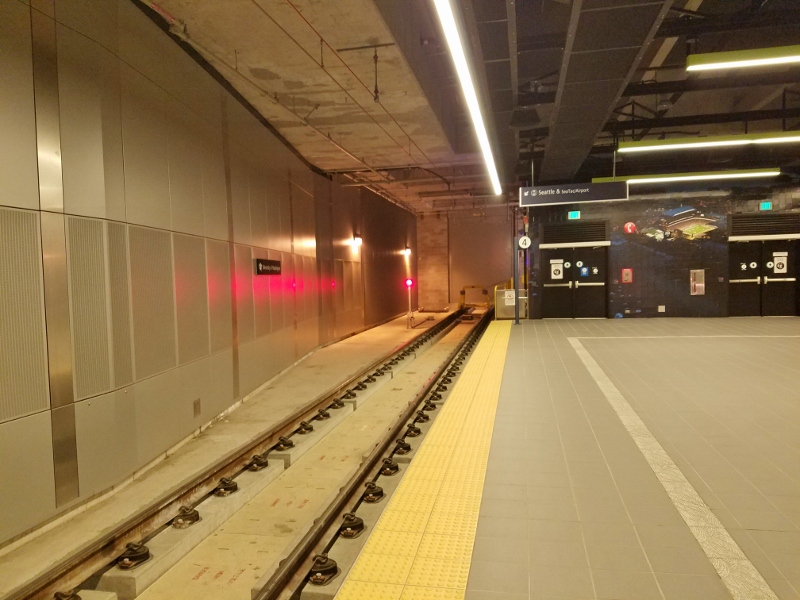
The northern-most point of Link light rail for the next half decade is at University of Washington station, which will extend beyond the pictured door to Northgate. The extension of light rail to Northgate Station, which was part of the original Sound Move vote in 1996, will span 4.3 miles, cost taxpayers in the Sound Transit service area $1.9 billion dollars, and is projected to open in 2021.

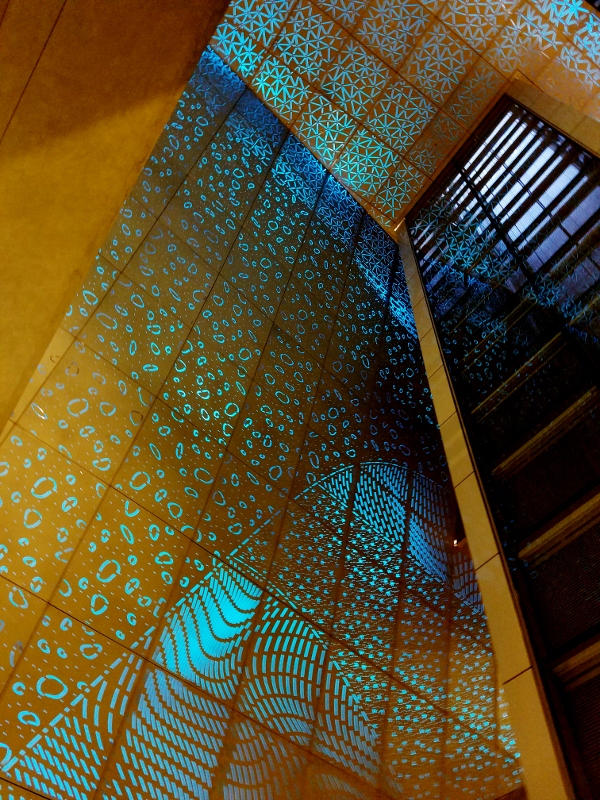
This is public art at the University of Washington light rail station. This piece is enormous and spans the entire 80-foot climb up from the platform to the exit outdoors.

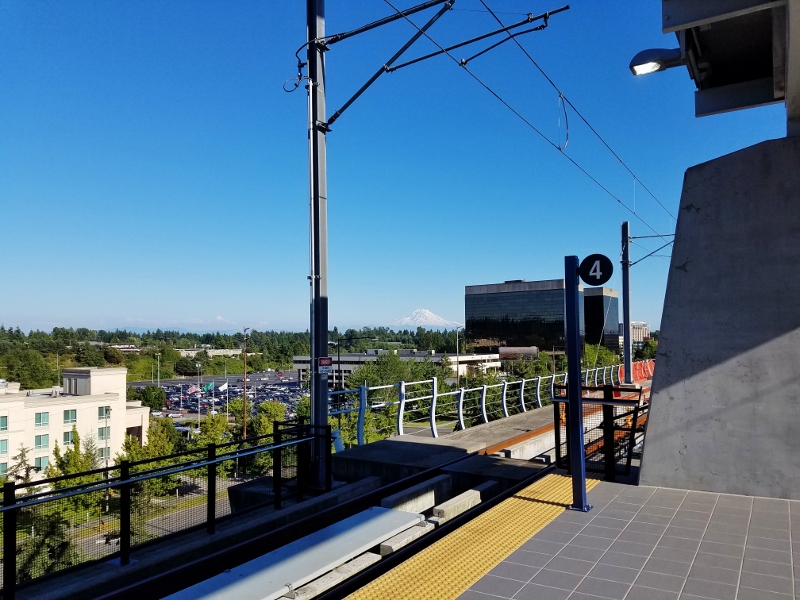
After visiting the University of Washington station, I traveled south to SeaTac, with a brief stop to examine the transit-oriented development above the station at Beacon Hill.
At the end of the Link light rail line in SeaTac, you can see what will soon be the final extension of the Link in this decade, costing $383 million and ending at the new Angle Lake Station at South 200th Street, expected to open later this year.

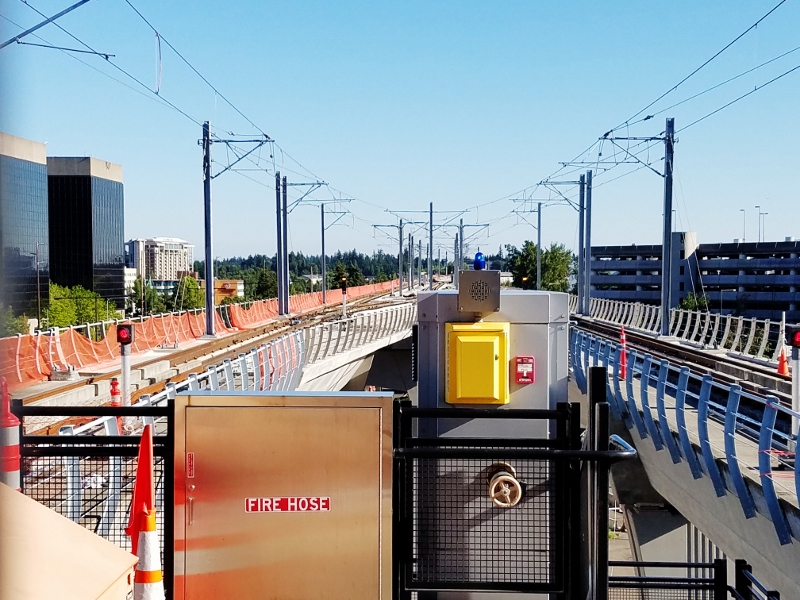
This is the light rail extension to Angle Lake, south of SeaTac.


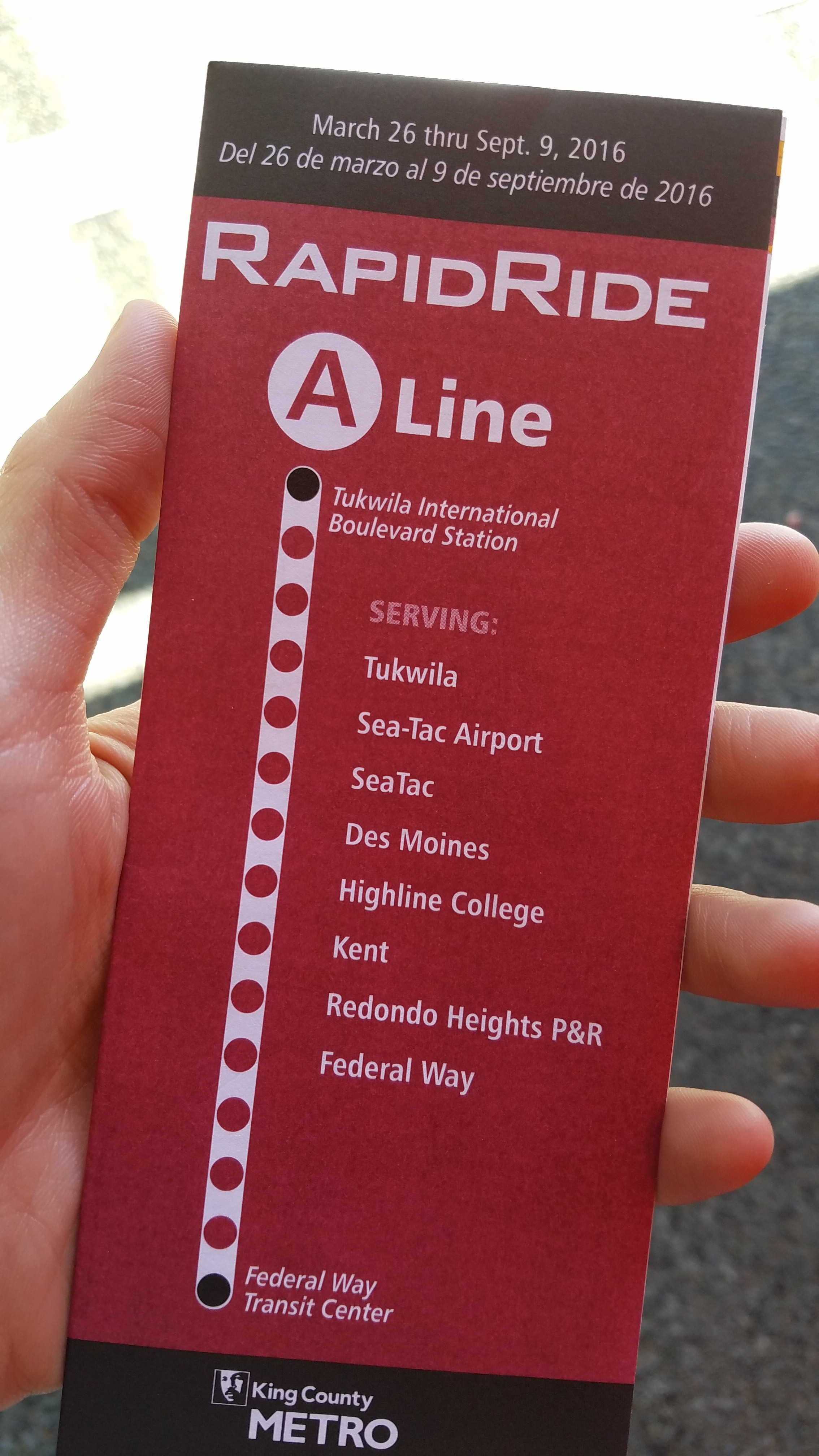

After my light rail excursion to SeaTac, I boarded a RapidRide bus and continued south to Federal Way. The bus shared an HOV lane with vehicles, but there was no traffic congestion that day. Unlike light rail, RapidRide had more stops along its route, which seemed to work well and did not feel as tedious as one might expect.
Most notable, however, is that this line ran exactly parallel to Interstate 5 and the new light rail line going to Angle Lake, which was visible from the window of the bus.
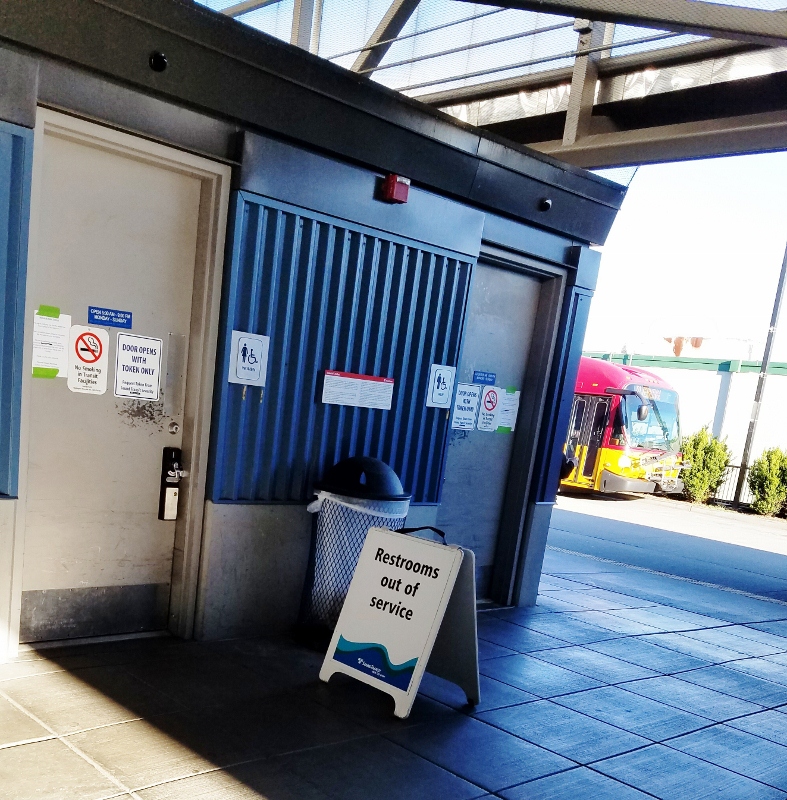
At the Federal Way transit station, I found this particularly disappointing. There were no bathrooms at the SeaTac light rail station and the only bathrooms available here were out of service.

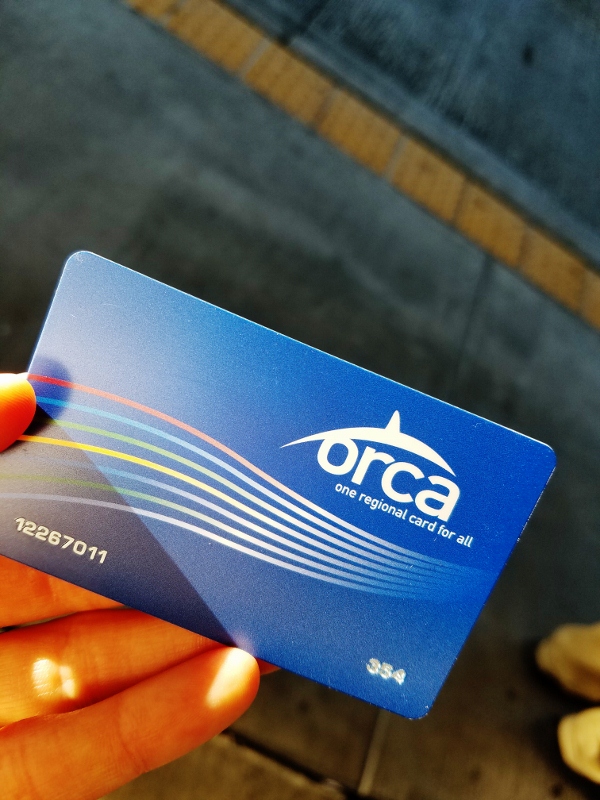
On the last leg of my trip, I purchased an Orca card to board the Sound Transit Express bus from Federal Way back to Seattle. The seats were cushioned, fairly private, and the ride was smooth and fast.
Overall, this was an incredibly good use of time. While I do understand the seductive, “big city” feel of light rail, I was surprised by how uncomfortable it felt. From the claustrophobia and humidity of being 80 feet below the ground to the hard seats or standing and holding on, I was relieved to get out and see open sky.
RapidRide was just as efficient and functional, but did not require the infrastructure that Link does – nothing new. The Sound Transit Express bus was most enjoyable as far as comfort and convenience for a work commute, so I may keep that Orca card.



